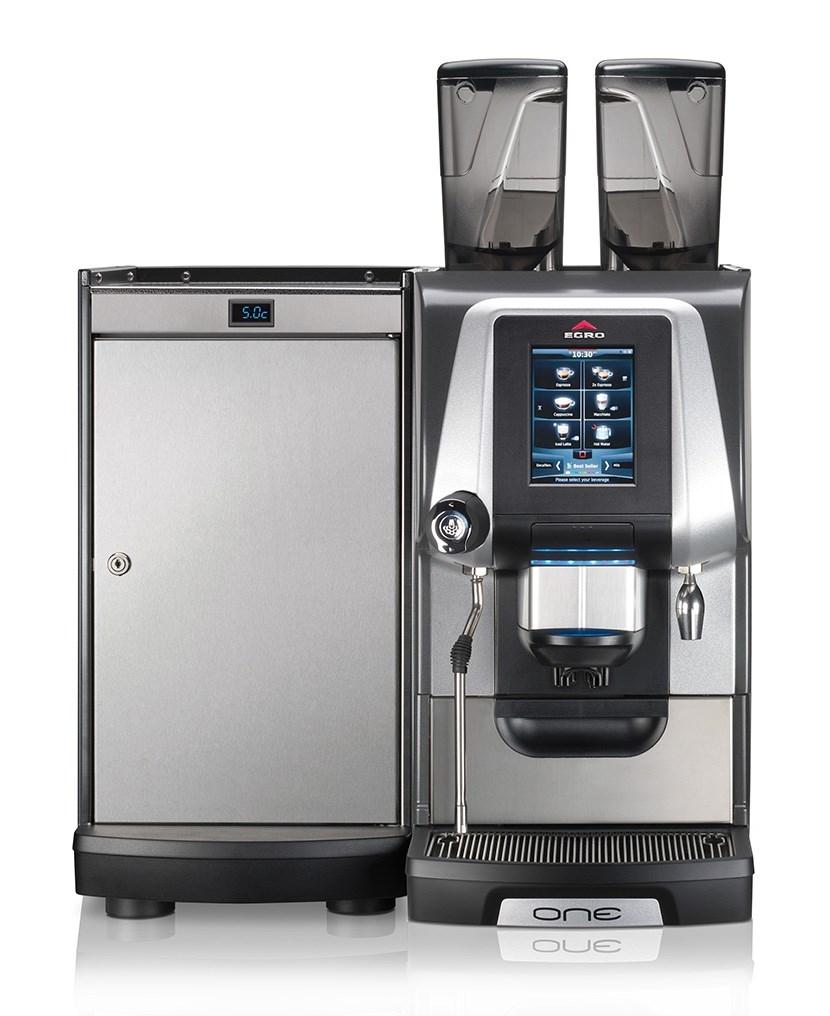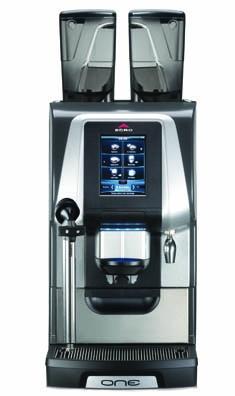Commercial Espresso Machine Buying Guide Featuring Rancilio and Egro
 .
.
Choosing a commercial espresso machine can be a confusing and overwhelming experience. This buying guide will walk you through the process of determining the right machine for you, and explain key features as we go along. Regardless if you choose to purchase a Rancilio commercial espresso machine or any other brand, this espresso maker guide will provide you with a good base of information from which to make decisions.
Step 1: Machine Type
Choose the basic type of commercial espresso machine that is right for your needs. There are 4 basic types of espresso machines. Each has its advantages. Here we will describe each in detail.
1. Super-automatic. Super-automatic (sometimes called fully automatic) machines have built in grinders. (All the other types of machines require a separate stand alone grinder) This equipment will grind the beans and brew the espresso at the push of a button. Advantages include ease of use, consistency, and they require the least amount of skill from the operator. Disadvantages include higher cost to purchase, higher maintenance cost, and less theatre compared to traditional machines. There are 2 basic types of super-automatic machines. These consist of a “one step” and a “two step”. A one step will have an automatic foaming system and a refrigerator for milk, allowing you to make any beverage at the push of a button. A two step will allow you to make espresso at the push of a button, but a second step is required to steam the milk using a steam wand.
One steps are the easiest machine to operate. Disadvantages include their higher cost of about 30% more than two step models. One steps provide less flexibility with milk final temperatures, and are limited to using only two types of milk. Automatic milk systems are sensitive to cleaning and must be cleaned on a regular basis to ensure proper operation. One step machines may also include a steam wand as an option.
Two step machines provide more flexibility on milk types and temperatures because of the use of a steam wand. Any number of milks can be used including whole, skim, or soy. Chai tea and hot chocolate can also be steamed using the steam wand. Two steps machines are about 30% less expensive than one step models.
2. Automatic traditional (typically called “automatic”). Automatic machines by Rancilio have a “USB” or “E” designation. Automatic traditional machines have 4 programmable buttons per group and one manual button. The program buttons can be set to dose a specific volume of espresso. After the programmed amount of espresso has been extracted, the machine will stop “automatically”. Automatic machines provide more consistent shot volumes than semi-automatic machines, and are easier to use as the operator does not have to measure the shot volumes. Disadvantages include cost, as the automatics are approximately 20% to 25% more expensive than semi-automatic versions of the same model.
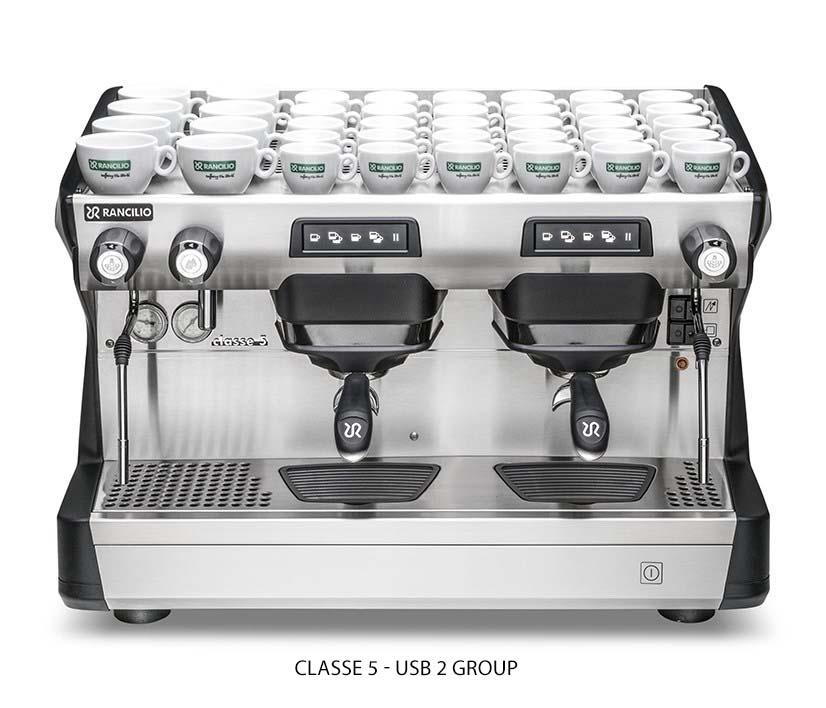
Classe 5 USB 2 Group Automatic
3. Semi-automatic. Semi-automatic machines by Rancilio have an “S” designation. Semi automatic machines have one button per group. The operator must start and stop the brewing process, and therefore manually measure the shot volumes. This requires more skill and attention on behalf of the operator. Advantages are that semi-automatics cost about 25% less than automatic machines of the same model. Some coffee shops will prefer semi-automatic machines as the added skill and attention required by the operator adds to the theatre of the process.
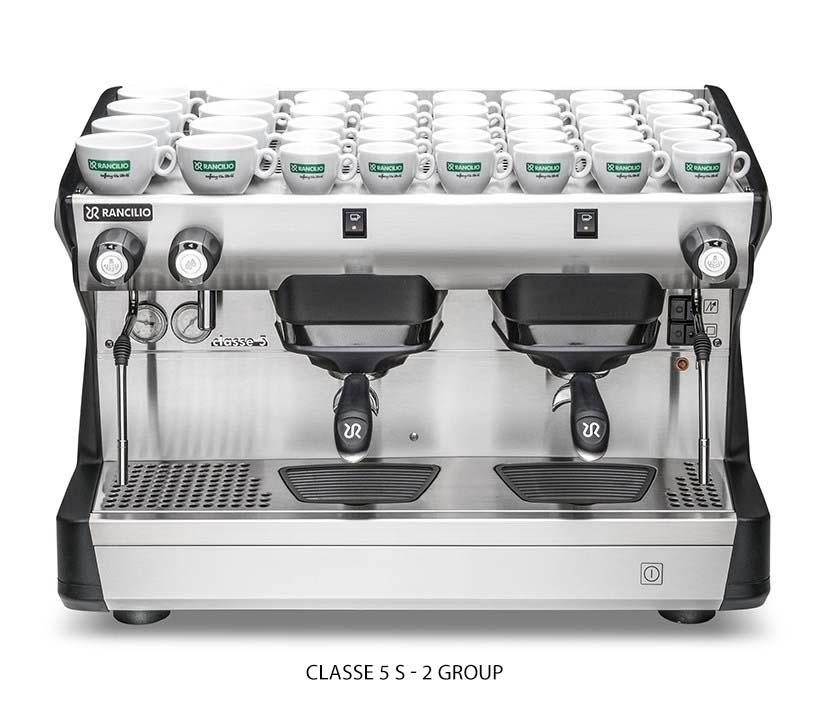
Rancilio Classe 5 S 2 group semi-automatic
4. Manual. Manual machines have no pump to create the needed pressure to extract espresso. The pressure needed is created “manually”. The most popular type of manual machines feature a lever on the group. This is where the term “pull a shot’ originated. The operator pulls the lever to force water through the ground espresso coffee to extract espresso. These types of machines require the most skill on behalf of the operator.
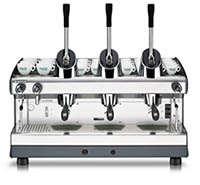
Rancilio Classe 7 Manual Lever Espresso Machine
Step 2: Groups
Unless, you have chosen a super-automatic, It’s now time to determine the number of groups. The groups on an espresso machine refer to the ports on the machine that can be used to brew espresso. Espresso machines typically come in 1, 2, 3, and 4 group versions. Typically, the more groups the machine has, the higher the volume capacity of the equipment.
1. One group machines are ideal for low volume operations, One group machine operate on 120 volts and have a maximum output of about 75 drinks per hour. These machines are suitable for bars, and restaurants with minimal volume requirements. They are also popular as upscale home unit.
Below are photos of the Rancilio classe 5 one group in the USB automatic version on the left, and the S semi-automatic version on the right.
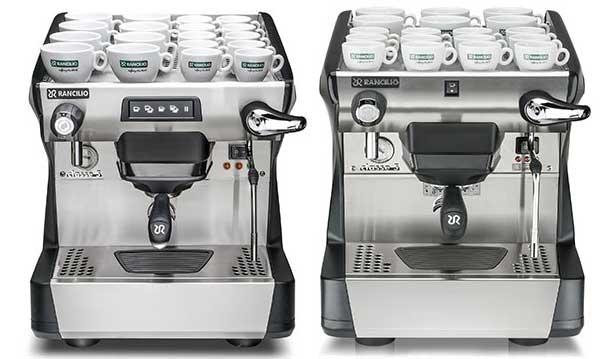
2. Two group machines are by far the most popular machines comprising about 80% of traditional machine purchases. 2 group compact machines will satisfy the needs of moderate volume operations. Compact 2 group machines sacrifice volume capacity in favor of taking up less space. Compacts will also be slightly less expensive. Full size two groups are suited to higher volume operations. If over half your sales are in beverage, you will likely be better served with a full size 2 group machine.
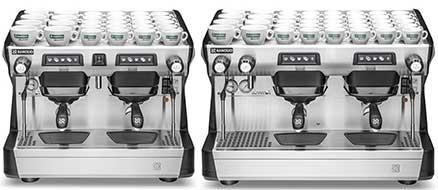
Rancilio Classe 5 two group in the compact and standard versions
3. Three group machines are suited for higher volume coffee shops. Operations on college campuses, train stations, and drive-thrus may need the volume capacity of a three group. If you have busy times where you will have 2 people operating the espresso machine, you likely then need a three group. If only one person is operating the espresso machine at all times, a two group is most likely the better choice.
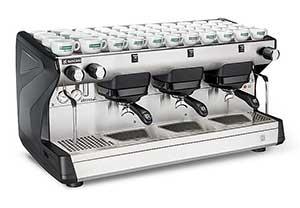
Rancilio Classe 5 S 3 group semi-automatic
4. Four group machines. Nobody needs a 4 group. Unless you have some very unique circumstances, these machines are impractical. If you think you need one, please call me and I will talk you out of it.
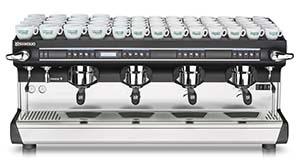
Rancilio Classe 9 USB 4 group automatic
Step 3: Model
It’s now time to determine which model. If you have decided on a one group, the classe 5 is for you. If you are looking at 2 or 3 group machines, we need to look at some additional features and determine if the Classe 5, Classe 7, or Classe 9 is best for you.
- Cost. The Classe 5 is the least expensive model offering the least amount of features. The Classe 9 offers the most features at the highest cost, and the Classe 7 fits in between.
- Space limitation. If you’re limited on space, the compact may be the only two group that will fit. The Classe 5 2 group compact is the two group with the smallest footprint.
- Power - The power of an espresso machine relates to its steaming capacity. Generally, the higher the wattage, the more steaming capacity the machine will have. If your operation sells a high number of milk based beverage within a relatively short time frame, a higher wattage machine will be more suitable to ensure that you have ample steaming capability during those peak times. The Classe 7 and Classe 9 machines are better choices if high power is needed as these machines boast 6000 watts of power providing almost unlimited steaming capacity.
- I-steam feature. (only available on automatic models) The i-steam automatic steam wand is available on the Classe 7 and Classe 9 models. The I-steam wand heats, and airates the milk automatically, shutting off at the pre-programmed temperature.
- Display (only available on automatic models) the visual display is available on the Classe 7 and Classe 9. The display provides a shot time, selection counter, clock, and other features.
- 4 Tea feature. This feature provides hot water for tea in two different volumes and temperatures. This feature is only available on Classe 9 (automatic model only).
- Aesthetics. The Classe 5 has a brushed aluminum finish on the back panel, the Classe 7 has a mirror polished finish on the back panel. The Classe 9 has the most in aesthetics with all stainless steel, side lighting, deck lighting, and led lights over the groups.
Step 4: Tall Version
Do you need a tall version? If your business is doing a lot of "to go" business and using paper cups, tall version espresso machine provides extra space at the group to allow the brewing of espresso directly into the cup. Tall versions are available in the automatic models only. Tall versions accommodate cups as tall as 5.7" and have slide out cup rest for smaller sized cups. Standard clearence is 3.25".

Classe 9 USB 3 group standard height and tall version
Step 5: Grinder
You will need a grinder for each type of espresso you are going to offer. The most common is a regular and a decaf espresso. If you are lower volume operation using pods, you will not need a grinder. There are 3 types of grinders to choose from. All Rancilio Kryo grinders come with cooling fins to dissipate heat and provide consistency.
1. Semi-automatic. This is the most standard type of grinder. There is an on and off switch and the operator manually turns the grinder on when needed to grind espresso.

Kryo 65 ST semi-automatic grinder
2. On Demand. This grinder has programmable buttons. When the microswitch is pressed by the portafilter, the grinder will grind and dose a programmed consistent amount into the portafilter.
3. Automatic. This grinder has a microswitch that automatically turns the grinder on to keep the ground coffee hopper full at all times. These grinders are popular in high volume Latin cafes.
Summary
You now have the basic tools to determine the right machine for you. Do not hesitate to contact a representative to answer any questions you may have about these products or our espresso maker guide. Beware of anyone giving you a hard sell on a specific feature, as they likely have their own interests in mind rather than yours. Be cautious of anyone touting exclusivity. Service is extremely important. Purchase equipment that comes with a labor and parts warranty coordinated and guaranteed by the manufacturer, or a local distributor with a qualified service department.
Written by Chris Gittens, regional sales manager for Rancilio Group North America. Chris received his Bachelor of Science degree at Florida State University in hotel and restaurant management. Chris began his career in the coffee industry in 1996 working with a syrup manufacture providing flavors to the coffee industry. Chris has 16 years of experience with espresso machines, specializing in sales and technical training, beginning his career at Rancilio North America in 2001.

